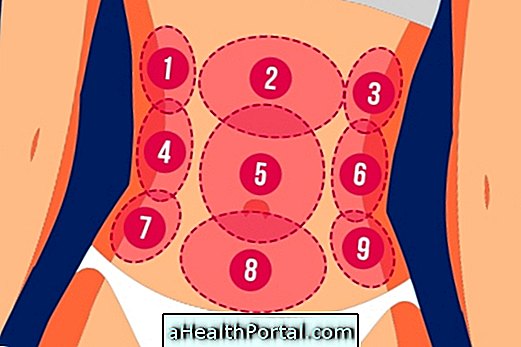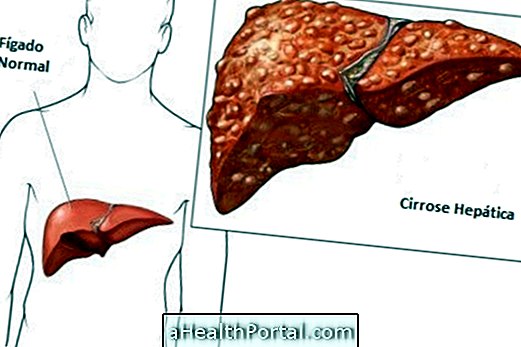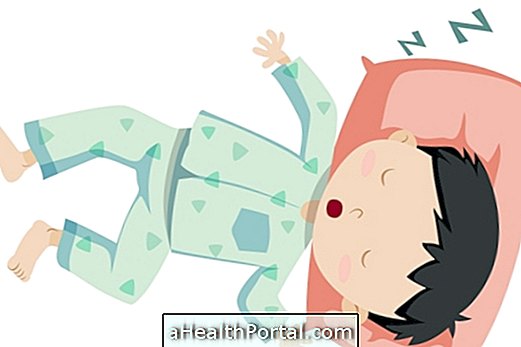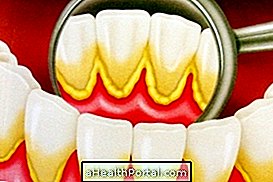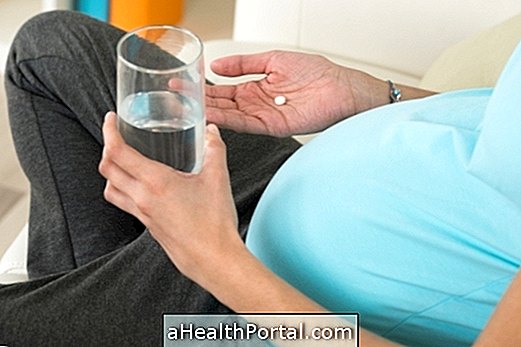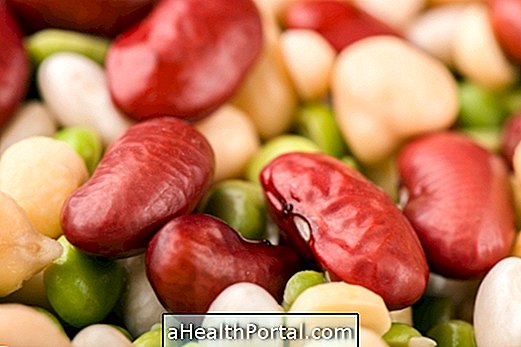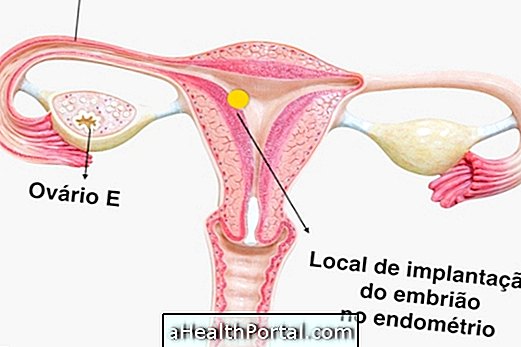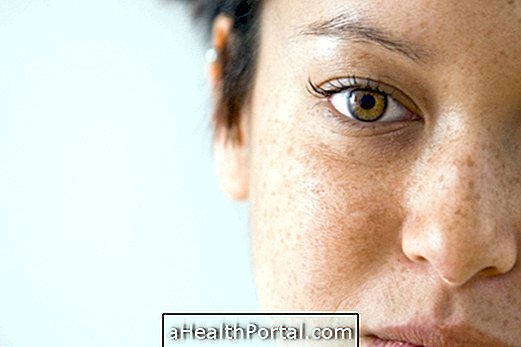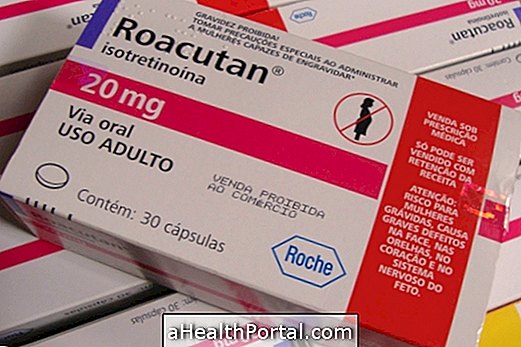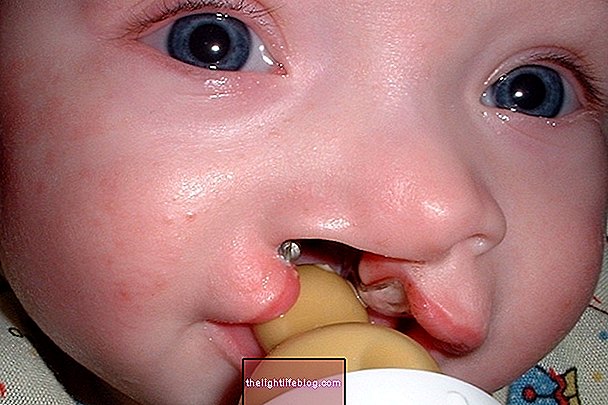The peeling of the skin happens when the most superficial layers are removed, which is usually caused by simple situations, such as dry skin. However, when it is accompanied by other symptoms, such as redness, pain, itching or swelling, it can also be a sign of a more serious problem, such as dermatitis, yeast infection and even lupus.
In most cases, peeling of the skin can be prevented through measures such as moisturizing the skin well or using hygiene products suitable for the skin type. However, if the symptoms last for more than a week or if the peeling becomes very uncomfortable, it is recommended to see a dermatologist, to identify the cause and start the most appropriate treatment.
1. Dry skin

Dry skin, known scientifically as xeroderma, happens when the sebaceous glands and sweat glands start to produce less oily matter and sweat than normal, which causes the skin to become drier and to peel off.
What to do: it is recommended to drink the recommended daily amount of water, avoid taking baths with very hot water, use neutral or glycerated soap and moisturize the skin with creams suitable for the type of skin. Here are some ways to moisturize your skin.
2. Sunburn

Sunburn happens when you are exposed to the sun for a long time without any kind of sun protection, which allows UV radiation to be absorbed by the skin. When this happens, UV rays destroy the layers of the skin, leaving it red and flaking.
Generally, sunburn is more common in places that are constantly exposed to the sun, such as face, arms or back, for example.
What to do: It is important to take a bath with cold water, apply creams suitable for post sun exposure, taking into account that they help to relieve discomfort and promote skin healing. Understand how the treatment of sunburn is done.
3. Contact allergy

Contact allergy, also known as contact dermatitis, occurs when the skin comes into direct contact with an allergenic substance, such as perfumes, cosmetics or cleaning products. This type of allergy can cause symptoms such as redness, itching, sores and pellets on the skin, which can appear immediately or up to 12 hours after contact, depending on the type of product to which you have been exposed.
What to do: it is recommended to avoid contact with the allergenic product, wash the skin with cold water and neutral pH soap and take an antihistamine, according to a doctor's prescription. If the allergy occurs frequently, it is possible to perform some allergy tests to check which substances cause the symptoms and to adjust the treatment. See when the allergy test is indicated.
4. Psoriasis

Psoriasis is a chronic inflammatory disease that causes pink or reddish plaques, coated with white scales on the skin. The dimensions of the lesions are variable and can appear on any part of the body, however, the most common places are elbows, knees and scalp. One of the characteristics of psoriasis is the peeling of the skin, which is sometimes accompanied by itching.
The intensity of the symptoms of the disease can vary according to the climate and with some factors such as stress and alcohol consumption.
What to do: The treatment of psoriasis must be indicated by a dermatologist and, usually, it is done with creams or gels to apply on the skin, as well as the ingestion of medicines or treatment with ultraviolet rays. Better understand what psoriasis is and how treatment is done. Better understand what psoriasis is and how treatment should be.
5. Atopic dermatitis

Atopic dermatitis is an inflammatory disease that causes dry skin due to the difficulty of retaining water and an insufficient production of fat by the sebaceous glands, which causes the skin to have a greater tendency to peel. Atopic dermatitis causes severe itching of the skin and is mainly located on the elbows, knees, wrists, back of the hands, feet and genital region.
This disease can appear in childhood and usually tends to decrease until adolescence, and can appear again in adulthood.
What to do: proper skin hygiene and hydration is important, in order to keep the skin as hydrated as possible. In some cases, it may be necessary to consult the dermatologist to start a more appropriate treatment with the use of emollient creams and medications applied to the skin. Check out how to identify atopic dermatitis.
6. Seborrheic dermatitis

Seborrheic dermatitis is a disease characterized by skin peeling, especially in places where there are more sebaceous glands, such as the head and upper trunk. When it appears on the scalp, seborrheic dermatitis is commonly called "dandruff", but it can appear in other places with hair, such as beard, eyebrows or in places with folds, such as armpits, groin or ears.
The peeling caused by seborrheic dermatitis is usually oily and tends to be more frequent in situations of stress and climate changes. In addition, it may be accompanied by symptoms such as redness of the skin and itching.
What to do: seborrheic dermatitis has no cure, however, there are some precautions to reduce the peeling of the skin and reduce itching, such as applying a repairing cream on the skin, using shampoo suitable for the type of skin, doing proper hygiene of the skin skin and wear light, airy clothing. In severe cases, it is necessary to consult a dermatologist to start a more appropriate treatment that can be done with corticosteroids, such as hydrocortisone or dexamethasone, for example. Understand better what is seborrheic dermatitis and how to treat it.
7. Yeast infection

Yeast infection can be caused by various types of fungi and is transmissible between people both by direct contact and through contaminated objects, especially if there is heat and humidity.
Usually, yeast infection causes the skin to peel, which may be accompanied by cracks and itching, being more common in hot and humid places such as toes, armpits, groins or other skin folds. It is also frequent that with perspiration there is a worsening of the itching, increasing the discomfort.
What to do: the treatment must be done with antifungal creams, indicated by the doctor and in addition it is important to take some precautions to decrease body moisture and control the infection, such as drying the body well after bathing or after sweating, wearing airy clothes and avoid sharing personal hygiene items. See how to identify yeast infection on your skin and how to treat it.
8. Cutaneous lupus erythematosus

Cutaneous lupus erythematosus is characterized by reddish lesions with a brown border and skin peeling. These lesions are usually located in the areas most exposed to the sun, such as the face, ears or scalp.
What to do: The treatment of this disease should include daily care to control sun exposure, such as wearing a hat, wearing long-sleeved clothes and applying sunscreen. In the most severe cases, it is recommended to consult the dermatologist to indicate a more specific treatment, such as the use of corticosteroids in cream or other remedies. Better understand what lupus is, its symptoms and treatment. more about lupus.
9. Skin cancer

Although it is more rare, peeling can also be a sign of skin cancer, especially in people who are exposed to the sun for a long time without any kind of sun protection.
In addition to peeling, skin cancer can also cause spots, which are usually asymmetrical, with an irregular border, with more than one color and with a size greater than 1 cm. Better understand how to identify signs of skin cancer.
What to do: The treatment of the disease depends on the type and stage of the cancer and may require surgery, chemotherapy or radiation therapy. Generally, the sooner treatment is started, the greater the chances of a cure.
Was this information helpful?
Yes No
Your opinion is important! Write here how we can improve our text:
Any questions? Click here to be answered.
Email in which you want to receive a reply:
Check the confirmation email we sent you.
Your name:
Reason for visit:
--- Choose your reason --- DiseaseLive betterHelp another personGain knowledge
Are you a health professional?
NoMedicalPharmaceuticalsNurseNutritionistBiomedicalPhysiotherapistBeauticianOther
Bibliography
- AMARAL, Karina F. V .; SOUZA, Rafaela B. A .. The Importance of Skin Hydration for Better Treatment of Aesthetic Dysfunctions. Multidisciplinary and Psychology Magazine. Vol.13, n.48. 763-770, 2019
- NATIONAL HEALTH SERVICE. Vacations and Travel: Protect yourself from heat and cold. Available in: . Accessed on Dec 16, 2020
- FERNANDES, Adriana Isabel P .. Skin care for healthy skin: pharmaceutical advice in the most common cases. Master's monograph, 2012. Faculty of Science and Technology, University of Algarve.
- GOMES, Fábio Ricardo E. S .. Seborrheic dermatitis in adults and children: etiopathogenic review and nosological position. Literature review, 2015. Faculty of Medicine, University of Coimbra.
- INFARMED. Report: sunscreens. 2018. Available at:. Accessed on Dec 16, 2020
- LOPES, N. et al .. Factors related to non-melanoma skin cancer in the male population. Nursing Brazil. Vol.19, n.3. 268-277, 2020
- OLIVEIRA, Ângela Zélia M .. Development of cosmetic formulations with hyilauronic acid. Master's Dissertation, 2009. Faculty of Pharmacy, University of Porto.
- RIBEIRO, Luiza H. et al .. Updates in the Treatment of Cutaneous Lupus. Brazilian Journal of Rheumatology. Vol.48, n.5. 283-290, 2008
- ROSA, Sónia et al .. Systemic treatment of severe atopic eczema in children. Portuguese Journal of Immunoallergology. Vol.27, n.3. 205-218, 2019
- PORTUGUESE SOCIETY OF DERMATOLOGY AND VENEREOLOGY. Skin diseases. Available in: . Accessed on Dec 16, 2020
